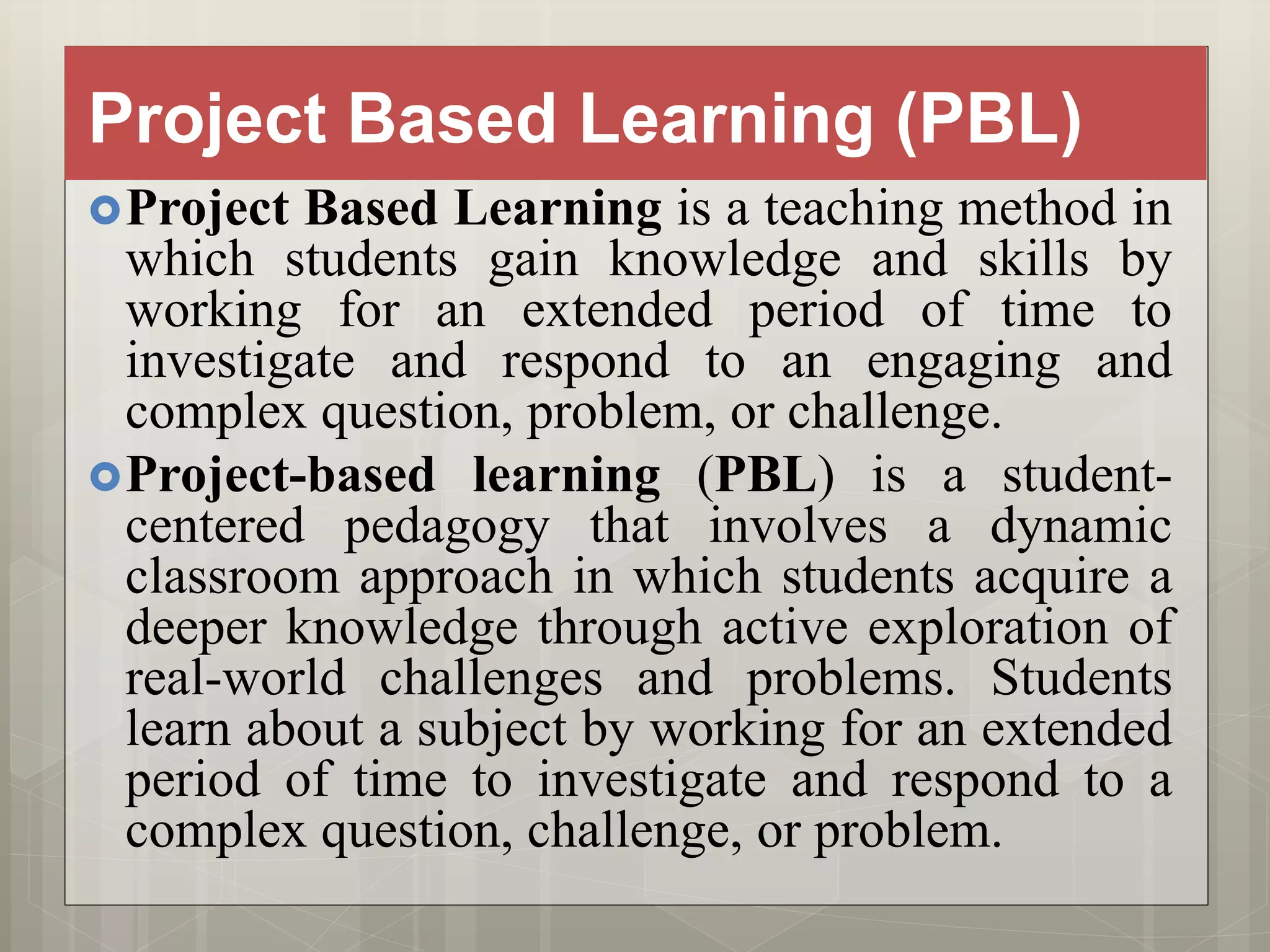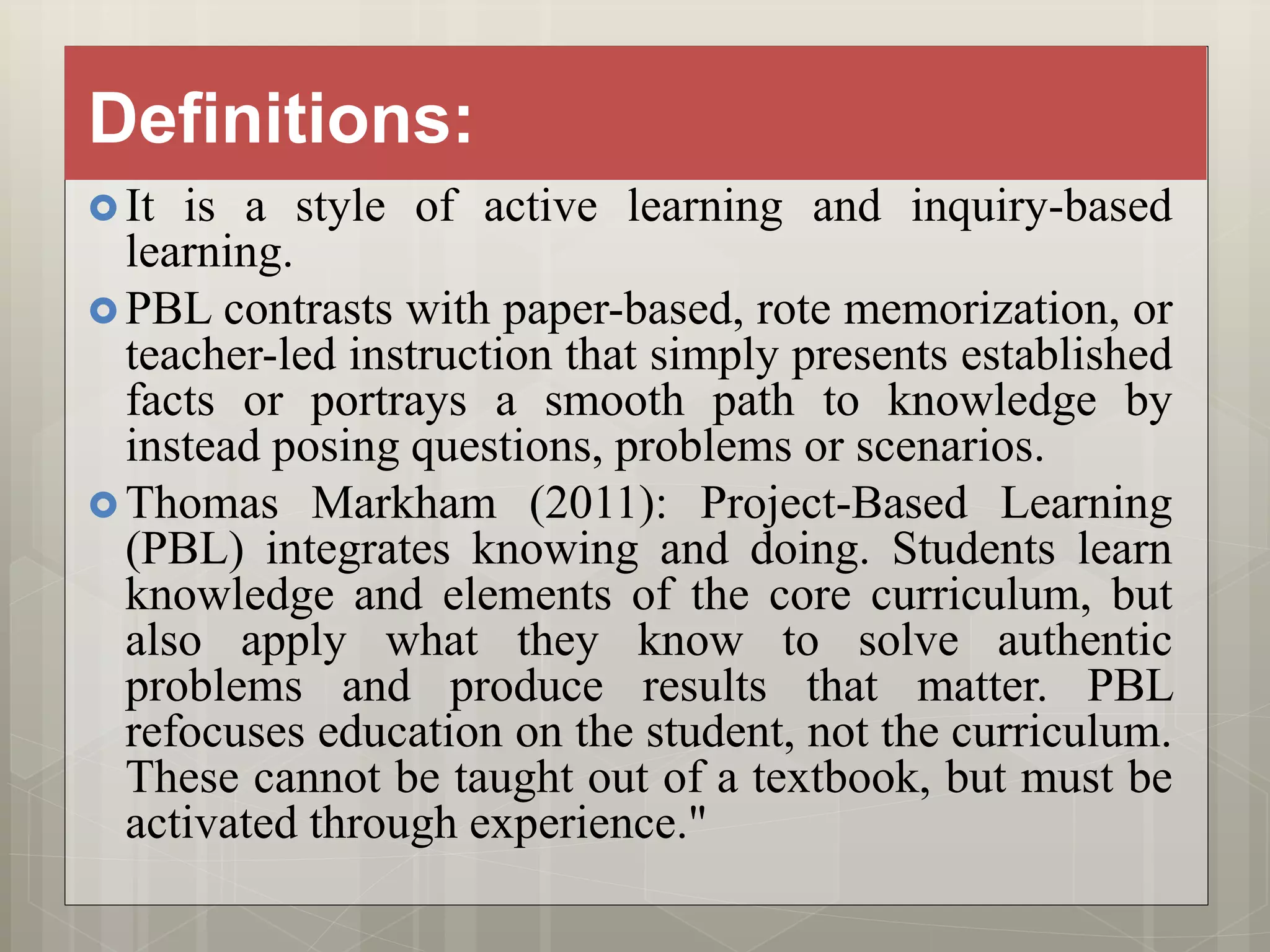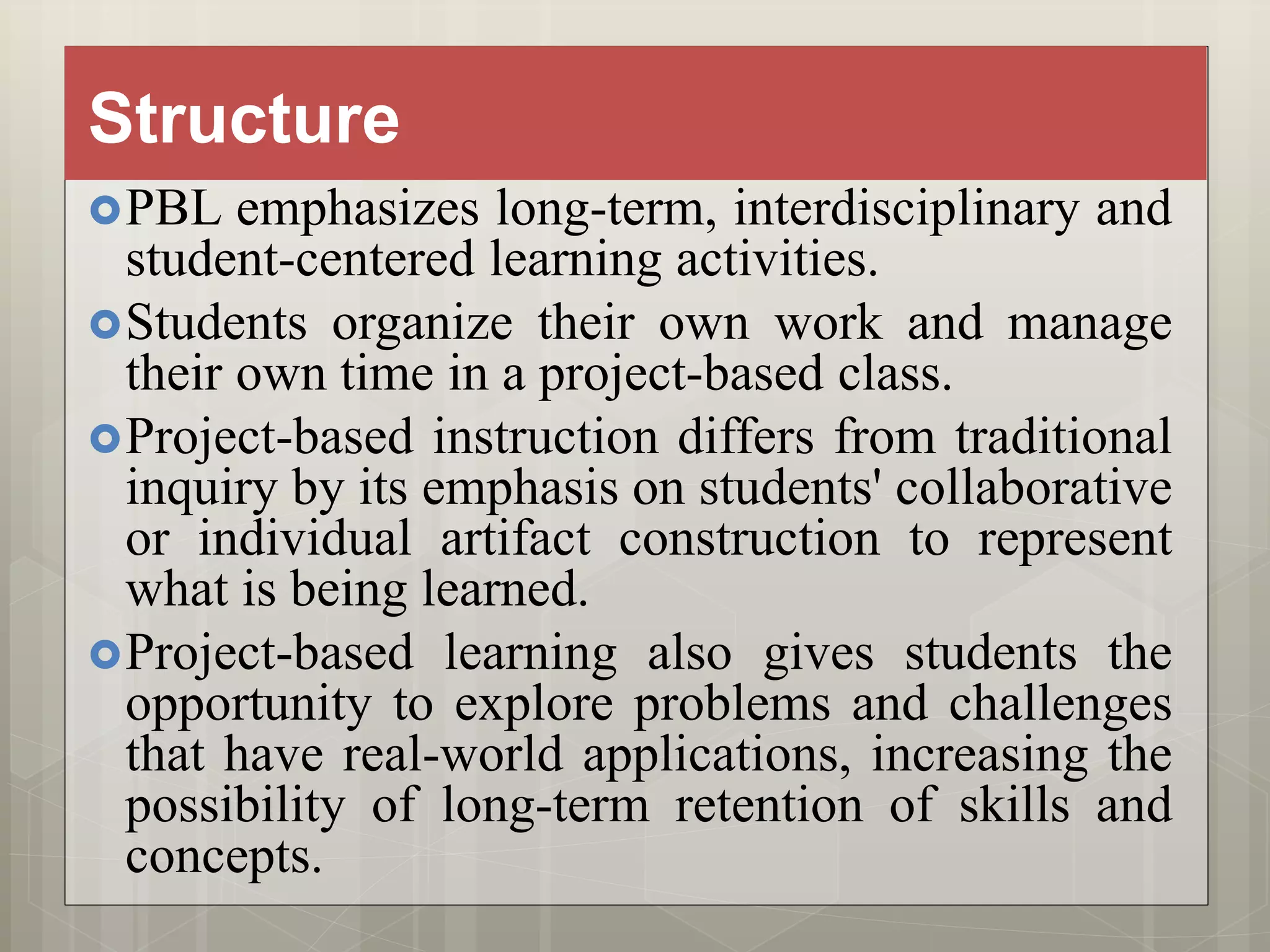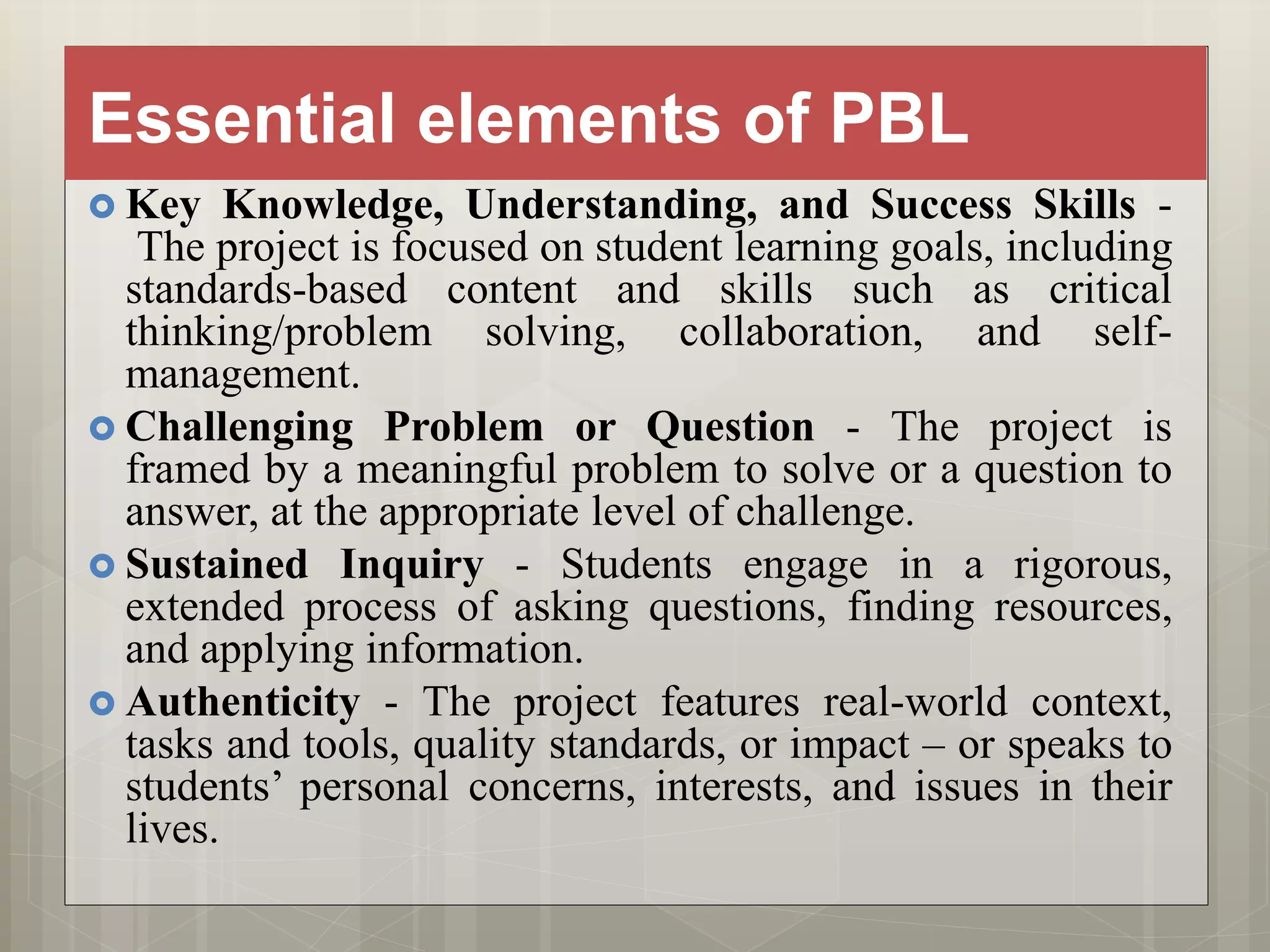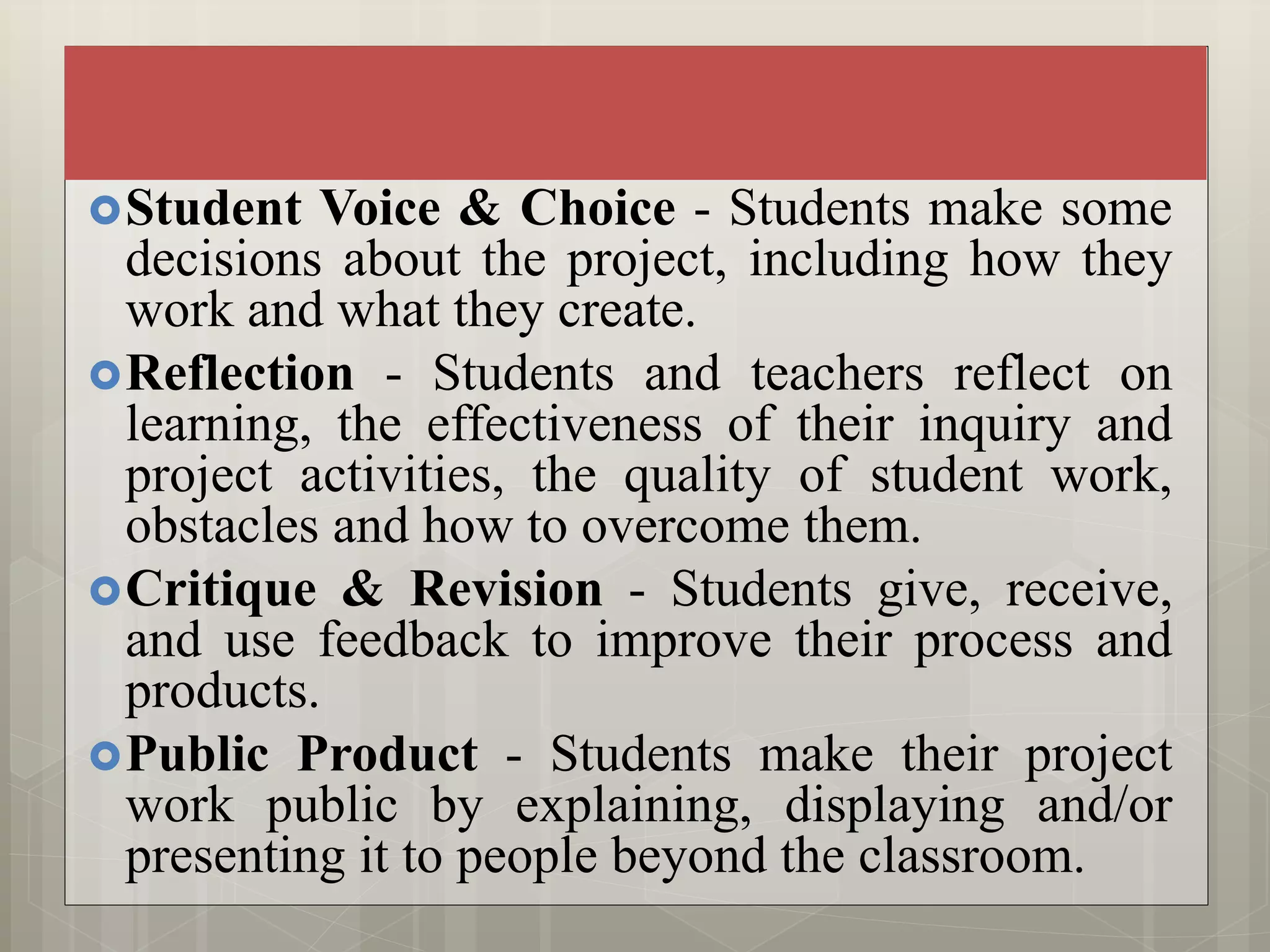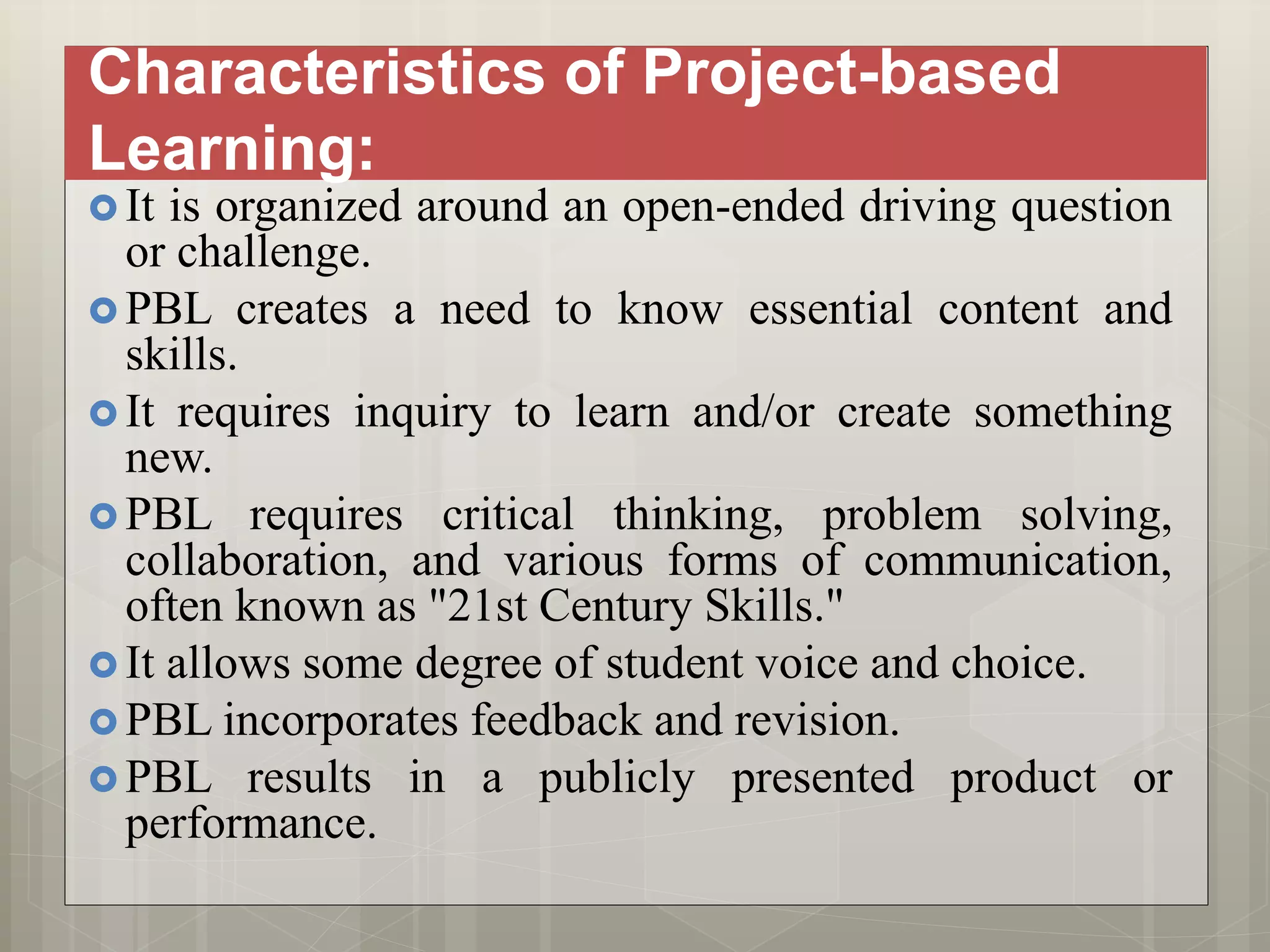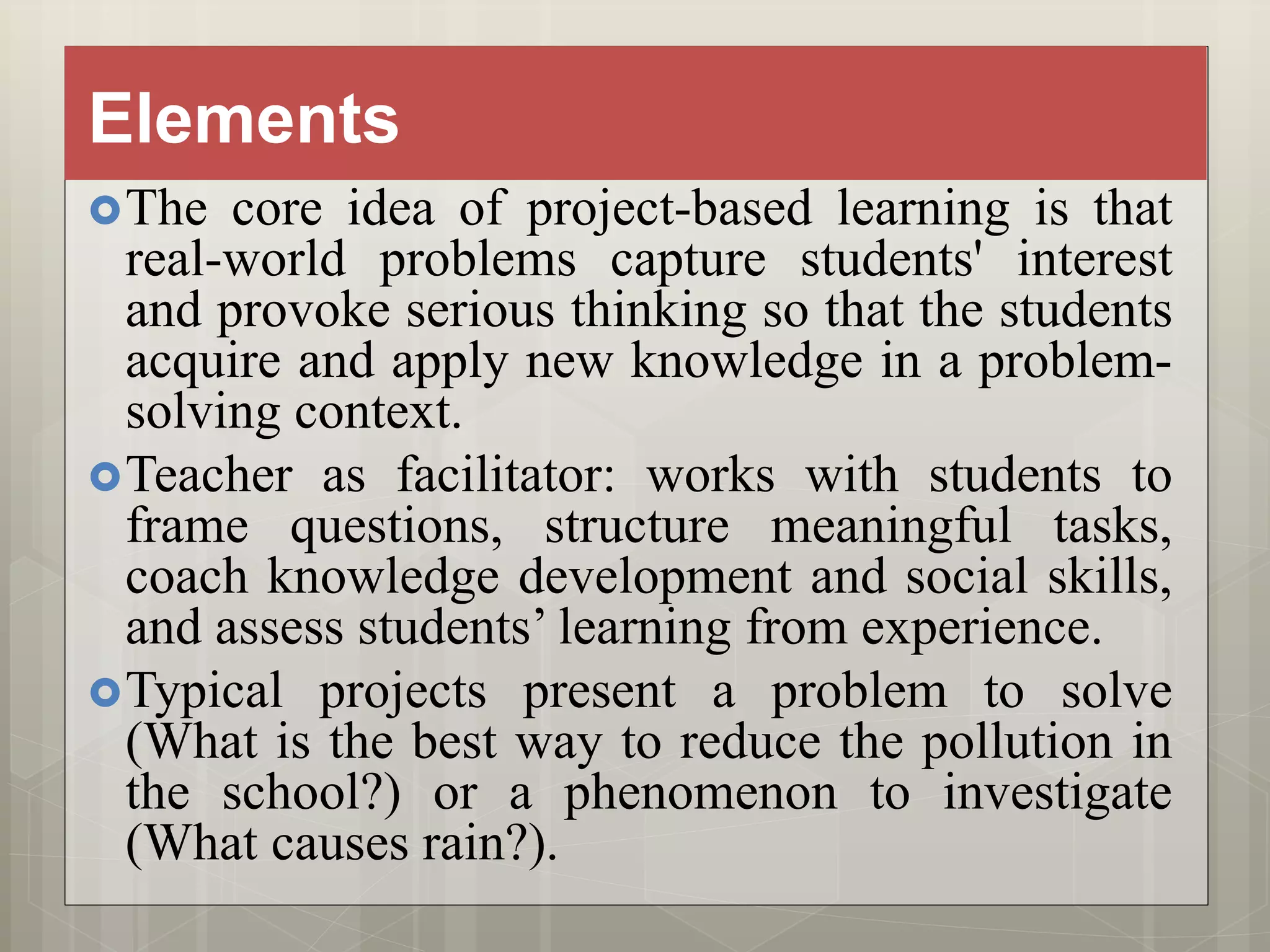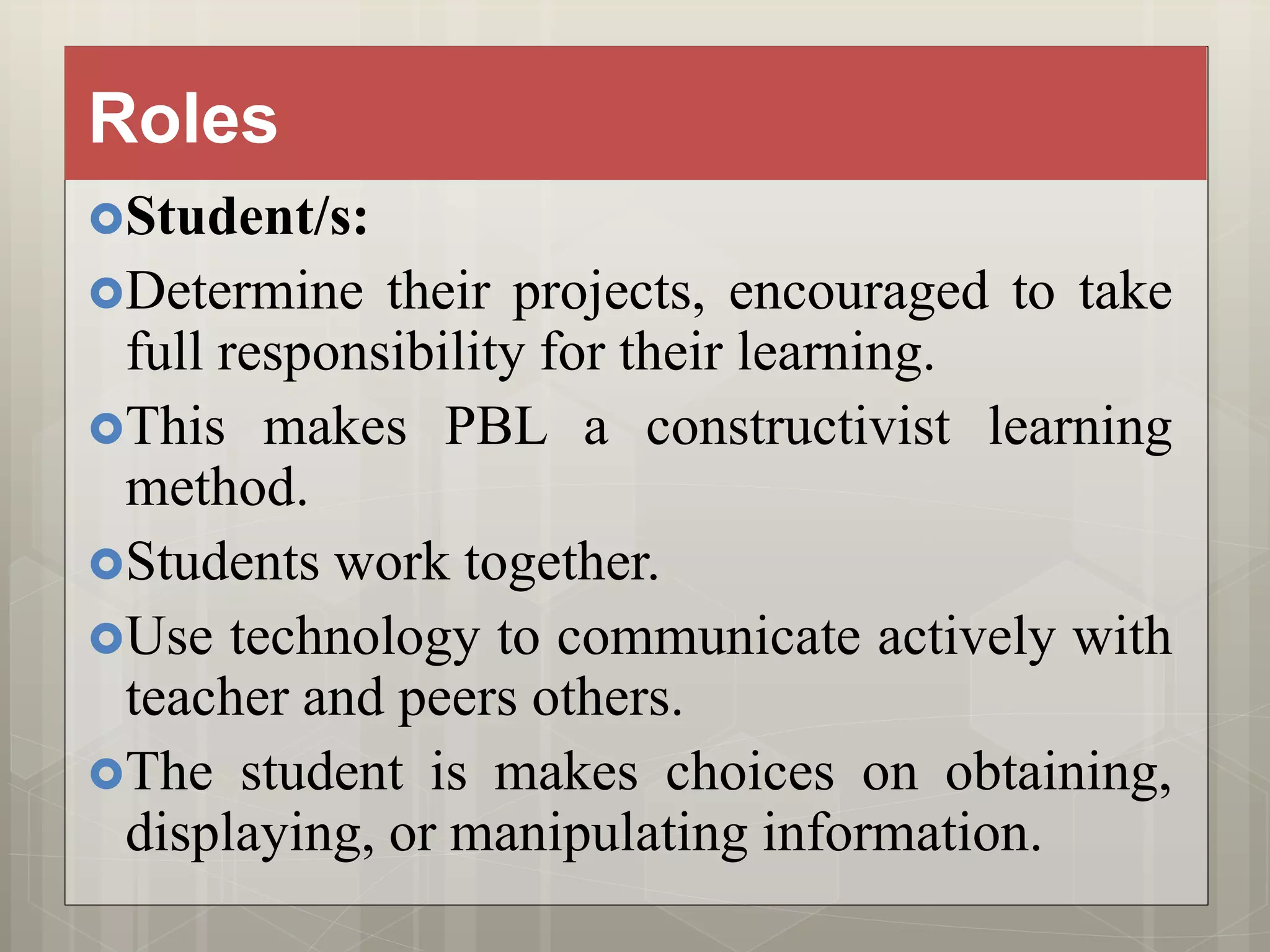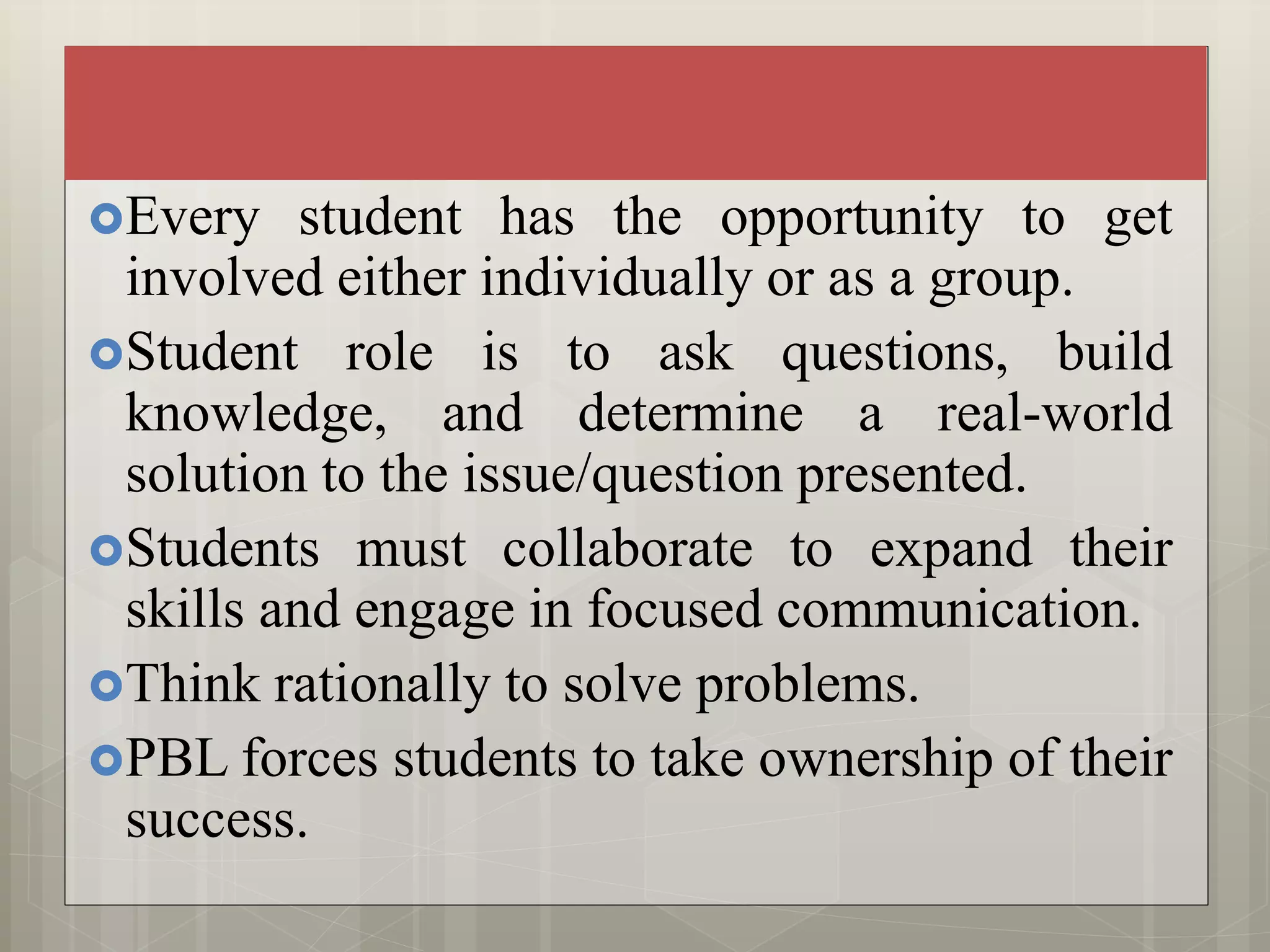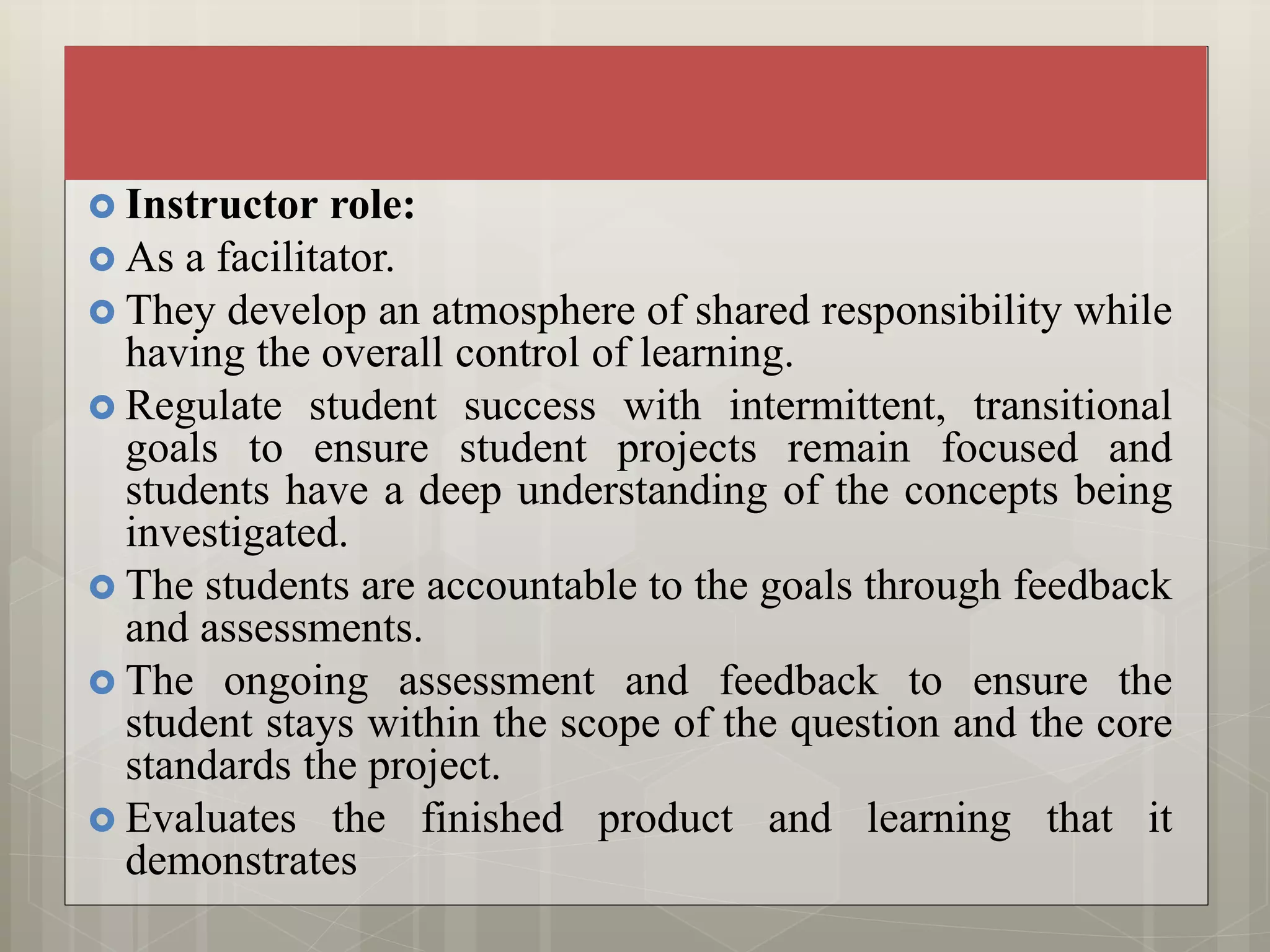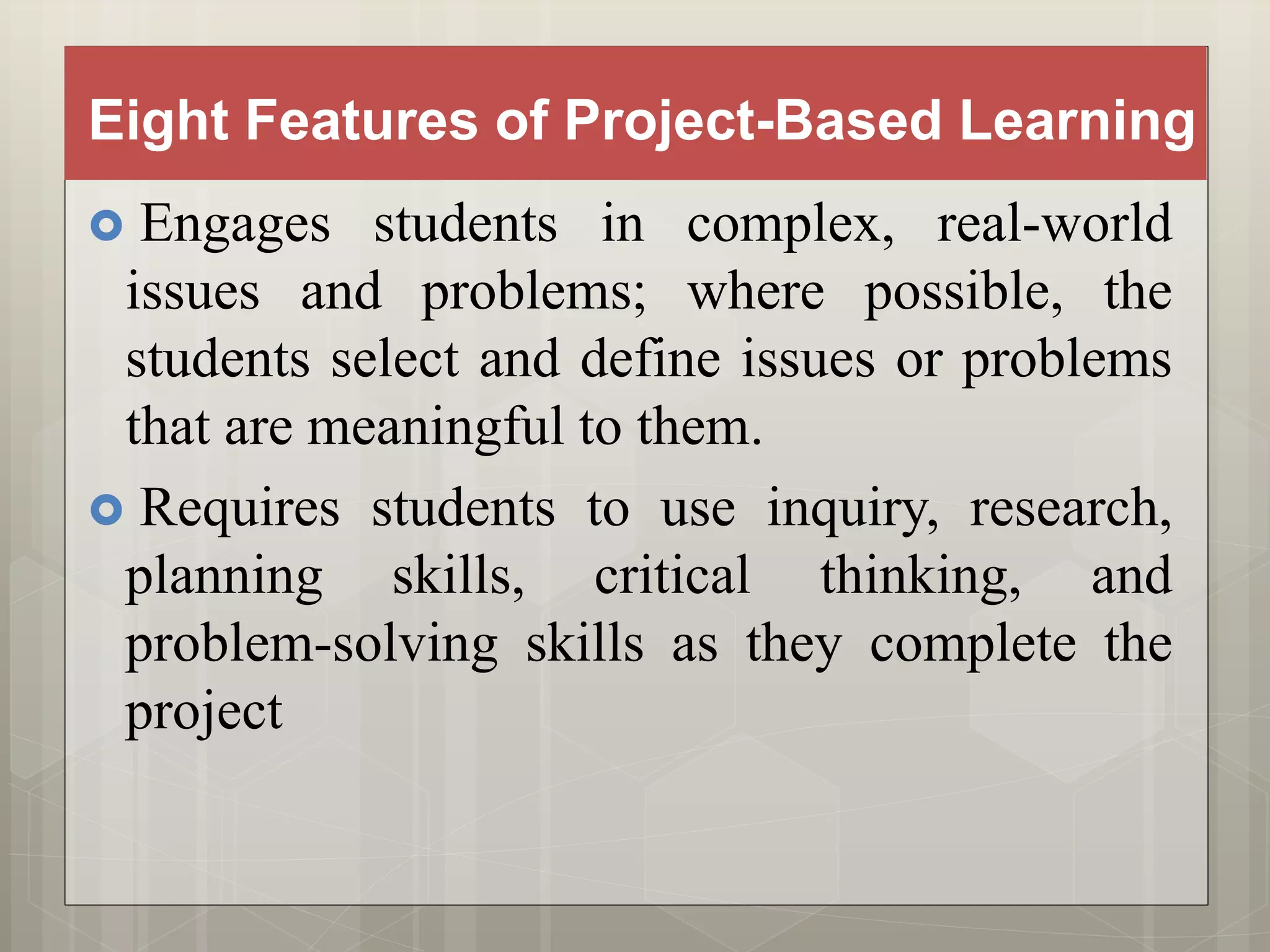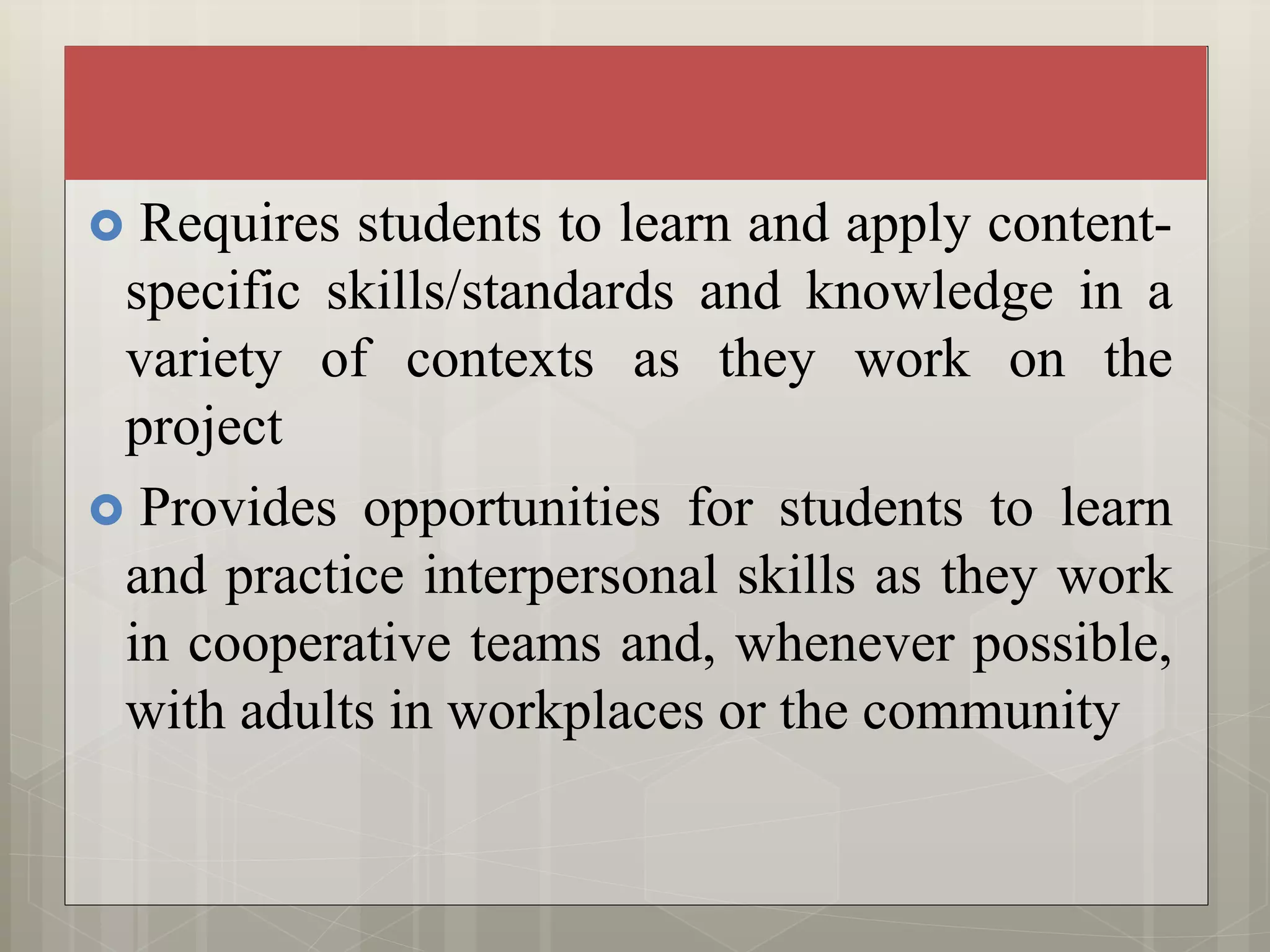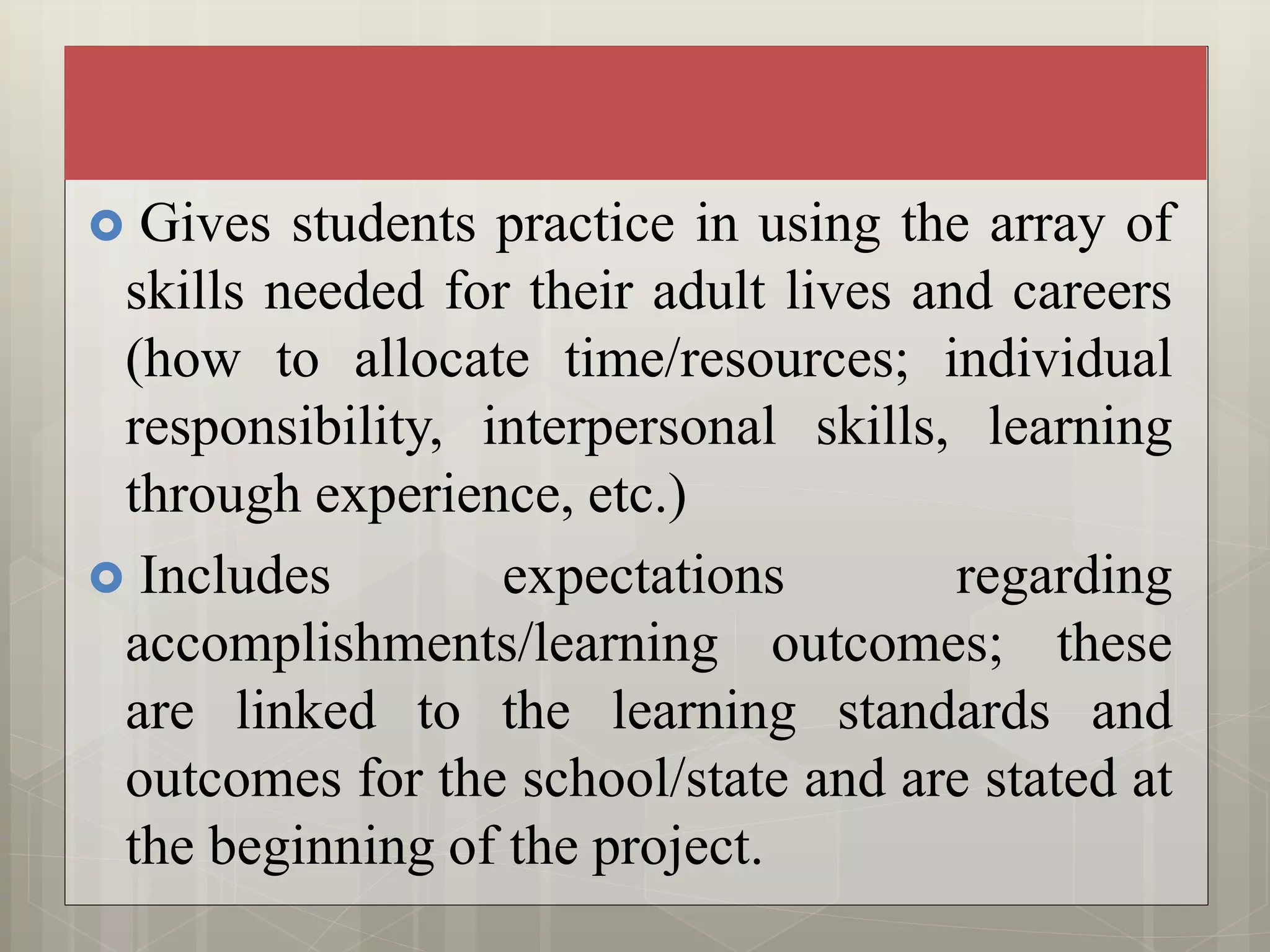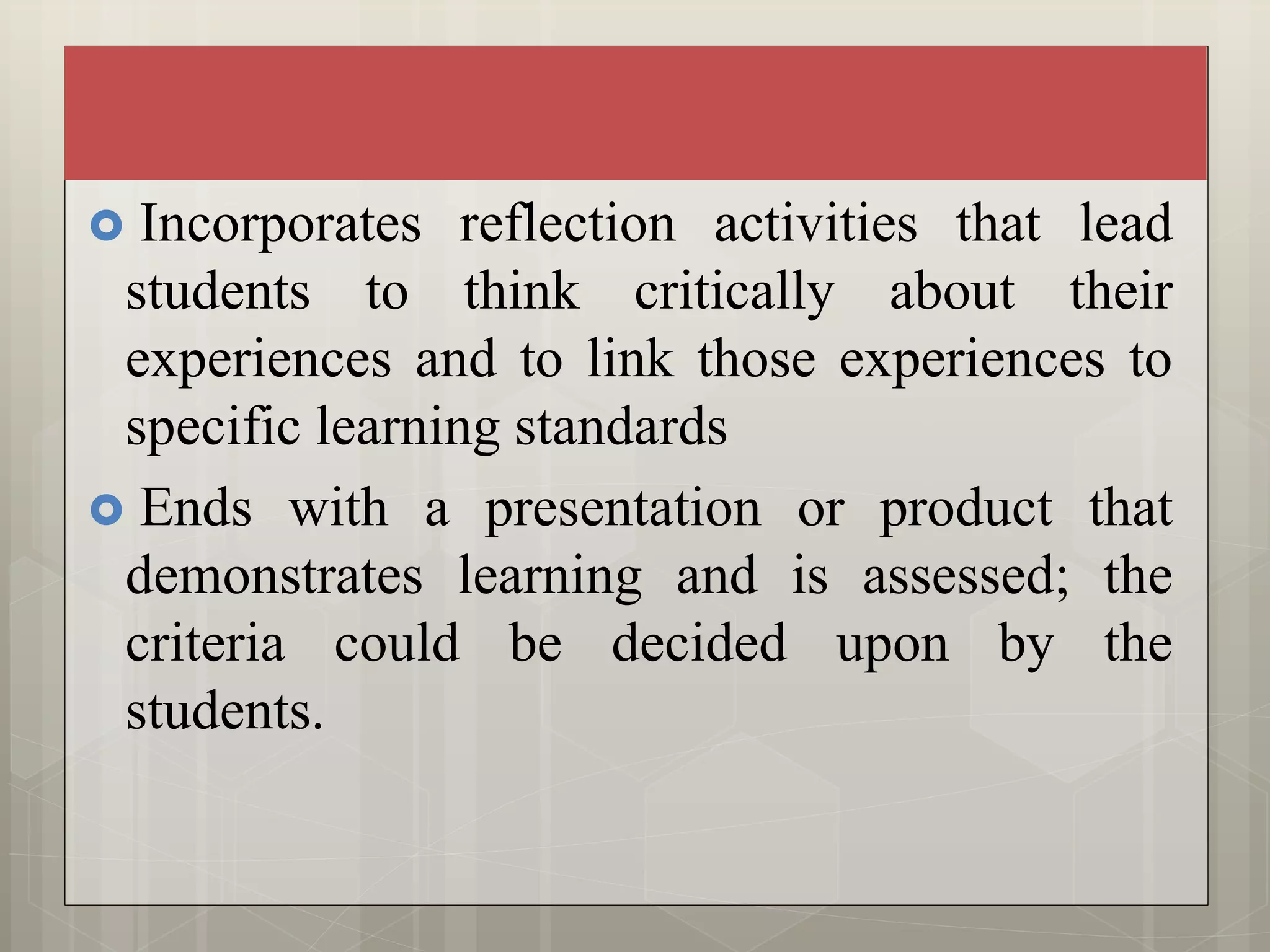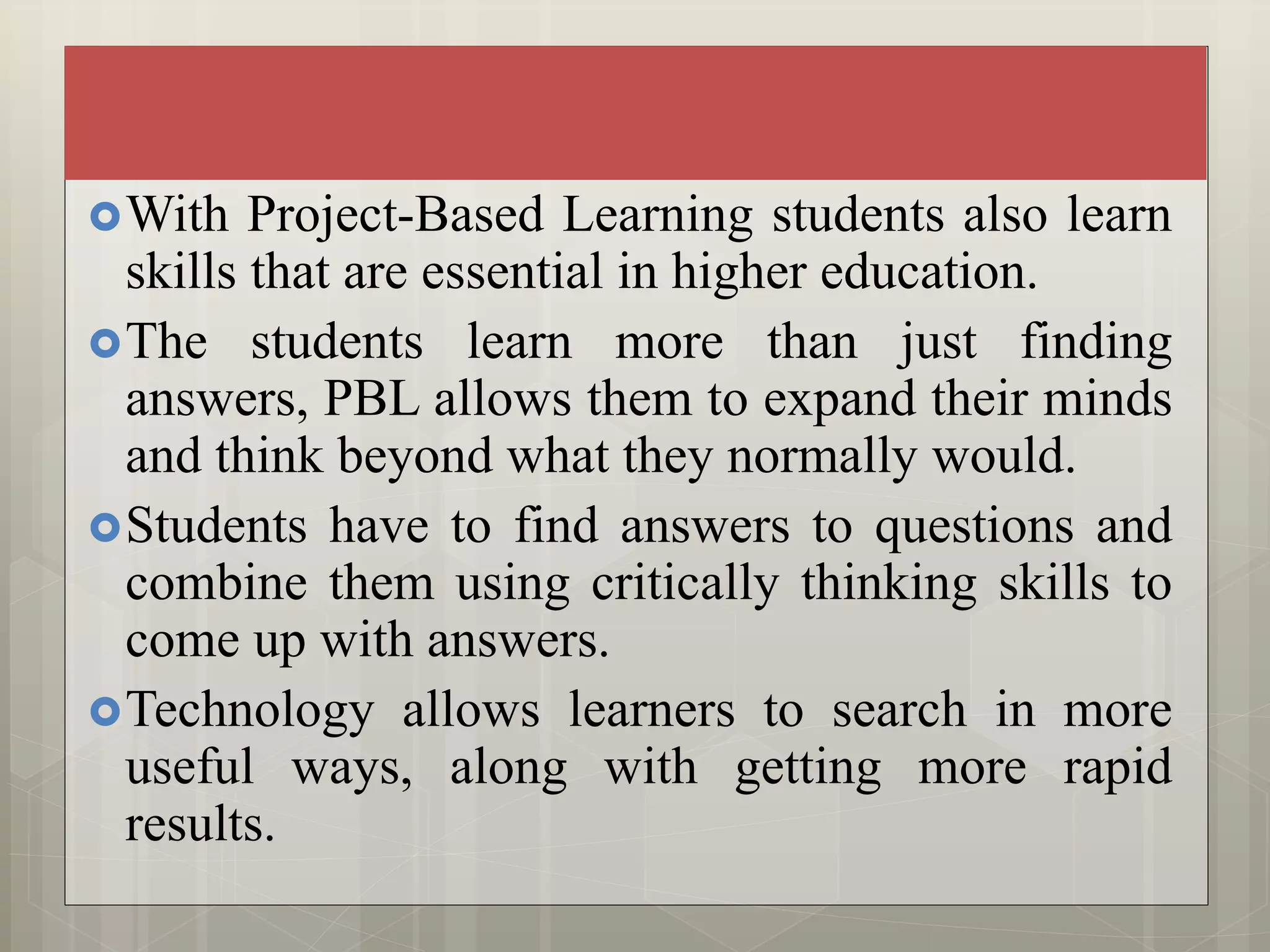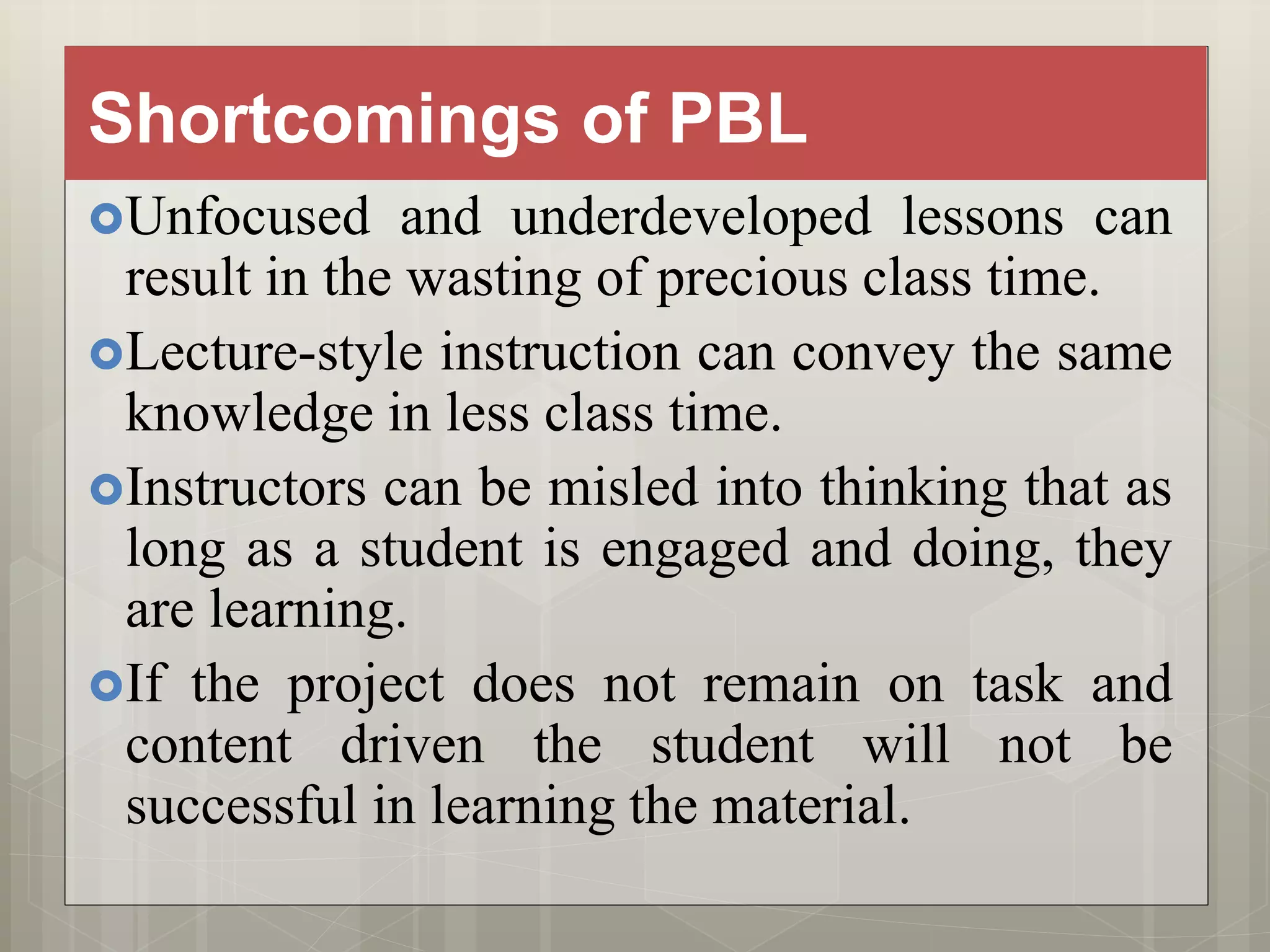This document discusses project-based learning (PBL), a teaching method where students work for an extended period of time to investigate and respond to a complex question or problem. It defines PBL, outlines its key elements and structure, and discusses the roles of students and teachers. Some advantages are that it engages students in real-world issues, develops skills like problem-solving, and increases student independence and self-esteem. Potential shortcomings include projects becoming unfocused, difficulty measuring success, and some students not contributing equally.

